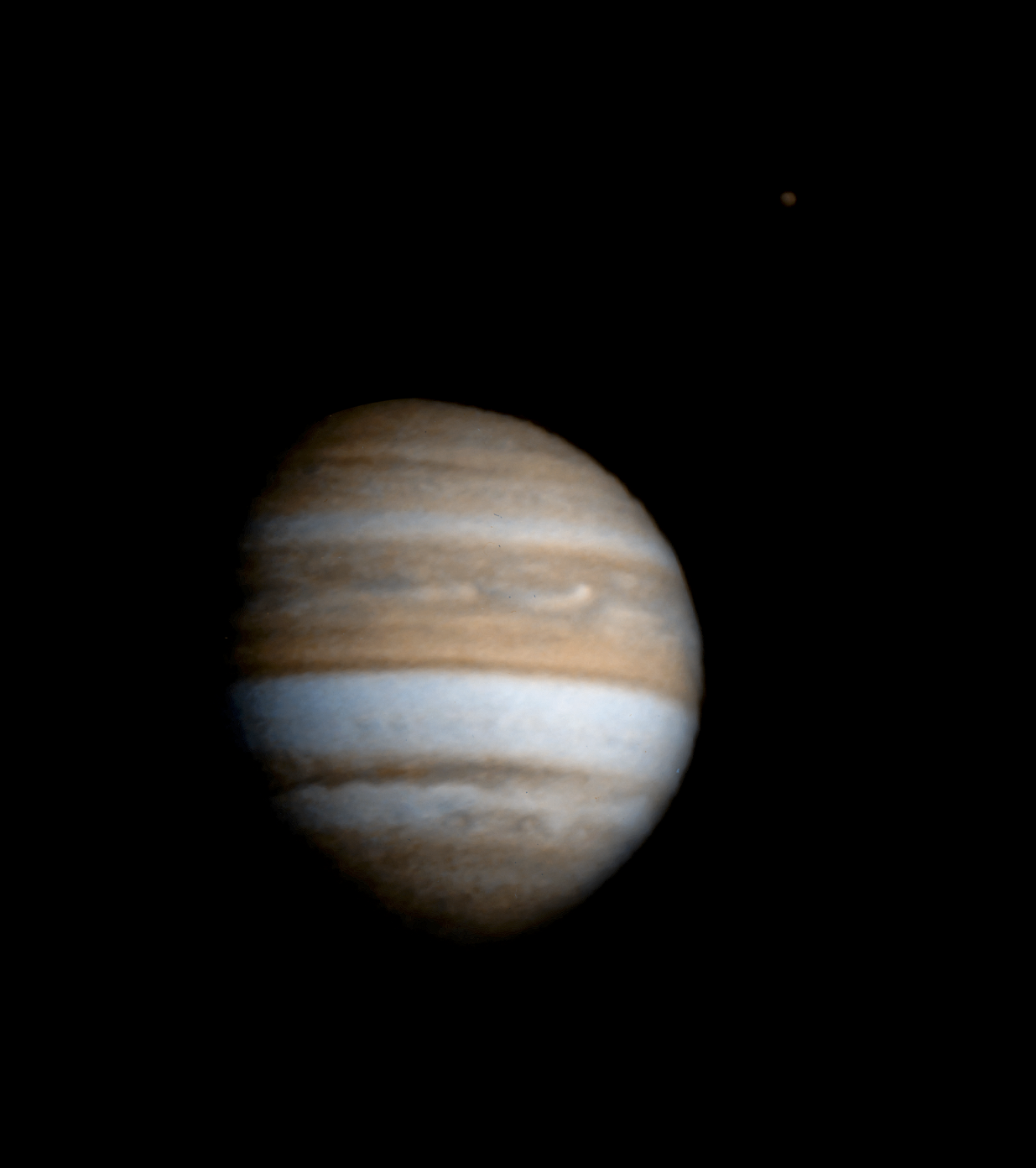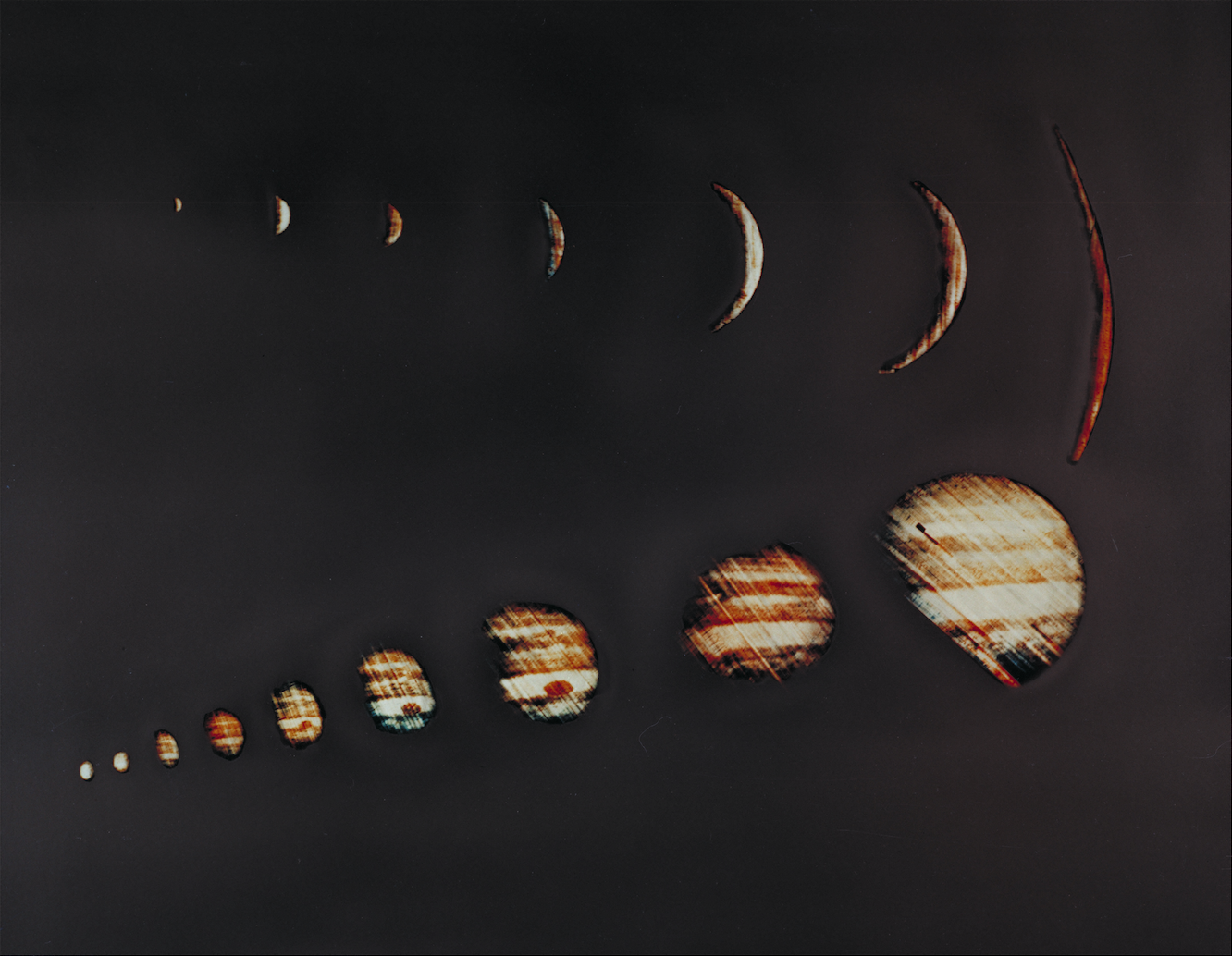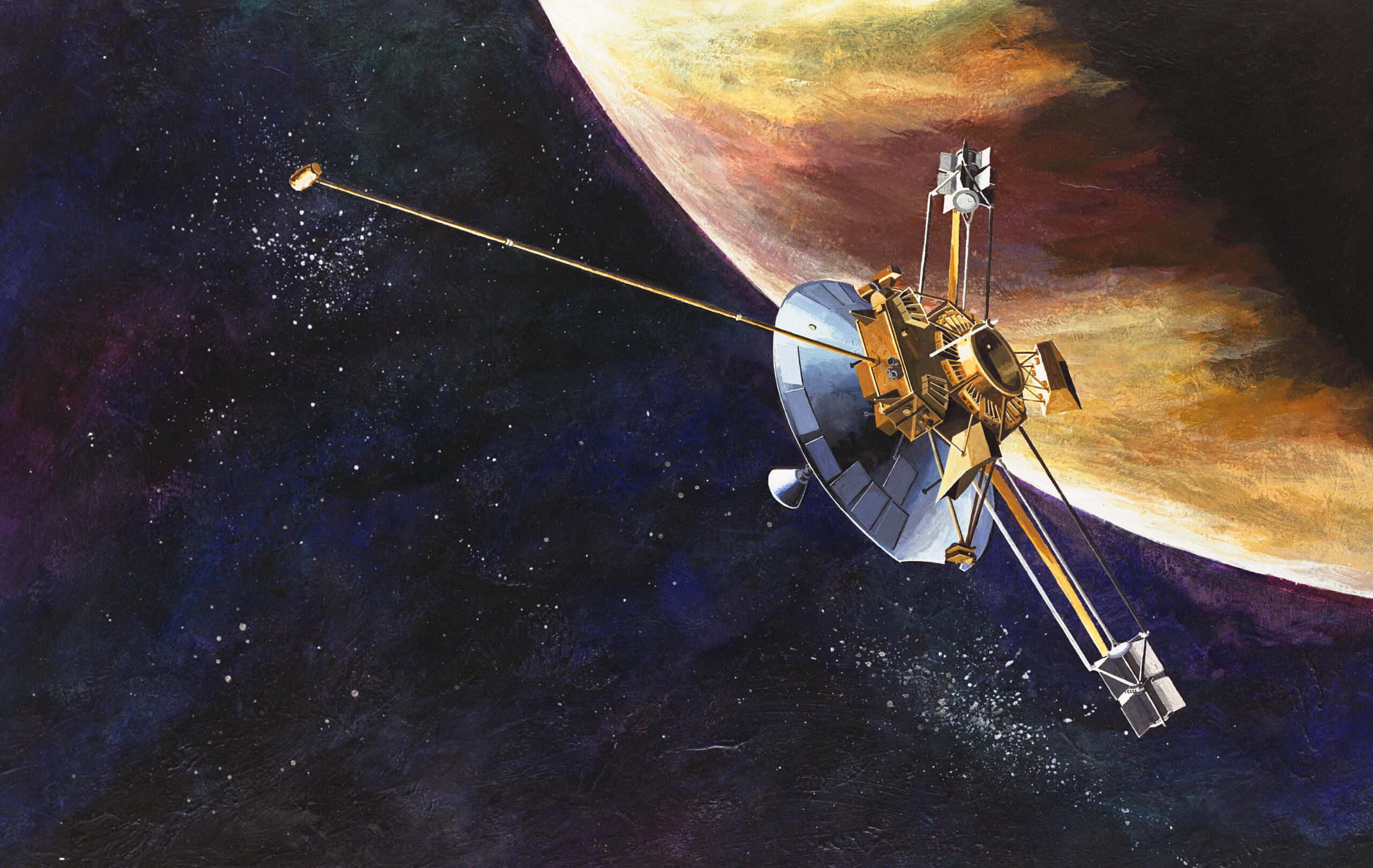
3 December 1973: At 02:26:00 UTC, the NASA interplanetary probe Pioneer 10 reached its closest approach to the gas giant, Jupiter, 132,252 kilometers (82,178 miles) above the planet’s cloud tops. At that time, Pioneer 10 had a velocity of approximately 132,000 kilometers per hour (82,000 miles per hour).

During the encounter with Jupiter, more than 500 photographic images were made and transmitted to Earth. A variety of measurements were made by sensors aboard the space craft.

![]() Pioneer 10 was built by the TRW Space & Technology Group, Redondo Beach, California, for the NASA Ames Research Laboratory. It was launched by a three-stage Atlas Centaur rocket from Launch Complex 36A, Kennedy Space Center, Cape Canaveral, Florida, 2 March 1972.
Pioneer 10 was built by the TRW Space & Technology Group, Redondo Beach, California, for the NASA Ames Research Laboratory. It was launched by a three-stage Atlas Centaur rocket from Launch Complex 36A, Kennedy Space Center, Cape Canaveral, Florida, 2 March 1972.
The last signal received from Pioneer 10 was on 23 January 2003. At that time, the probe was an estimated 12 billion kilometers (80 Astronomical Units) from Earth.
© 2018, Bryan R. Swopes
Oops. I think the caption for the composite approach and departure image is of Jupiter and not Saturn.
Just checking to see if you’re paying attention, Steve. 🙂
Speed is wrong. https://science.nasa.gov/mission/pioneer-10/
Well, Phil, I suppose that would depend on which official NASA source you rely on. I used data from NASA SP-446, PIONEER: FIRST TO JUPITER SATURN AND BEYOND, Richard O. Fimmel, James Van Allen and Eric Burgess, Scientific and Technical Information Office, National Aeronautics and Space Administration, Washington D.C., 1980, at Page 79: “Its launch speed of 51,685 km/hr (32,114 mph), a record in itself, was soon to be surpassed by its speed at closest approach to Jupiter of 132,000 km/hr (82,000 mph.)”